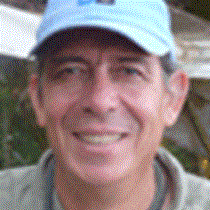Osa Peninsula, Corcovado National Park, Costa Rica
What a great day we had. We started our day by lifting anchor in Drake Bay, Costa Rica, and then we sailed south for about an hour to spend the morning in a private preserve next to Corcovado National Park.
Right after breakfast, we went for a nature walk bordering the Corcovado National Park. Soon we saw why this part of Costa Rica is consider one of the most intensive biological places on the planet. During our two hour walk we got to see a Boa constrictor snake, White-faced capuchin monkeys, Howler monkeys and many colorful tropical birds, including honeycreepers.
The tropical wet forest contained in the Osa Peninsula is widely considered the most species-rich in Central America. Species found here that are critically endangered or absent in the rest of the country include jaguar, American crocodile, Scarlet Macaw, Spectacle Caiman and Baird’s Tapir. Harpy eagles, which are close to extinction, have been sighted on several occasions.
We went back to the ship for lunch, and the National Geographic Sea Lion cruised twenty minutes south in order to drop anchor in front of the well know Corcovado National Park.
Some of us took the waterfall trail that leads to a nameless creek just behind the ranger station. We saw quite a few cycad plants along the banks, in what looked like healthy populations of “living fossil” plant, An American crocodile was also spotted hiding between some dry branches in a sandbar in the nearby river.
The trail ended at a lovely waterfall. Later we went swimming in one of the river pools. This was one of the highlights of the day; taking a dip and cooling of in the middle of the rainforest, was a remarkable moment.
Other groups took a long hike through a spectacular rainforest where Spider monkeys and Sloth were among some of the wildlife spotted.
The weather could not have been better during our nature walks, as we explored one of the most remote and preserved parts of Costa Rica. Now we know firsthand why this is considered one of the most intensive biological places in the world!




